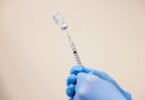Athens, Ga. – Rod Dishman, a professor of exercise science in the University of Georgia’s College of Education, has been named as one of 13 members of a national advisory committee that will help create the first federal guidelines on physical activity for Americans.
“The Physical Activity Guidelines for Americans,” which will be issued in late 2008, will provide science-based recommendations on the latest knowledge about activity and health, with depth and flexibility to target specific population subgroups, such as seniors, children and persons with disabilities.
The report will be the first time the U.S. Department of Health and Human Services has sanctioned such physical activity guidelines, which will be similar to longstanding Dietary Guidelines for Americans.
“Other groups such as the American College of Sports Medicine, the American Heart Association, the Institute of Medicine and the Centers for Disease Control have issued statements, but they weren’t uniform and sometimes were in conflict with each other,” said Dishman. “The Surgeon General’s Report in 1996 was mainly saying why we should be active; it didn’t have recommendations to all Americans about what types of activities and in what amounts.”
Dishman is an expert in the area of mental health benefits of physical activity. Internationally recognized for his research on the determinants of physical activity and related neurobiological adaptations, Dishman has authored seminal reviews of the research literature, 125 refereed articles, 35 invited book chapters, three textbooks and two edited books on exercise and public health. He was a contributing author to two of the reports he cited, Recommended Quality and Quantity of Exercise for Healthy Adults published in 1998 by the ACSM and Physical Activity and Health: A Report of the U.S. Surgeon General.
The advisory committee will hold its first meeting June 28-29, 2007. It will survey the history of physical activity guidelines in the U.S. and be introduced to the systematic evidence review process that will form the basis of the deliberations. The committee will also examine and summarize research that can be used as the basis of the guidelines and make suggestions on what should be included.
The result will be a clear guide to all Americans about the types and amounts of physical activities that will optimally influence their health and well-being, said Dishman. This will allow informed decision-making about whether they choose to substitute sedentary leisure pursuits with active ones.
“In the past, Americans have gotten too many, too varied and too confusing messages about physical activity,” he said. “A single, uniform message, based on the cumulative scientific evidence, rather than often conflicting professional opinion, can reduce the confusion about physical activity. It can let people move from thinking about it to doing it.”



